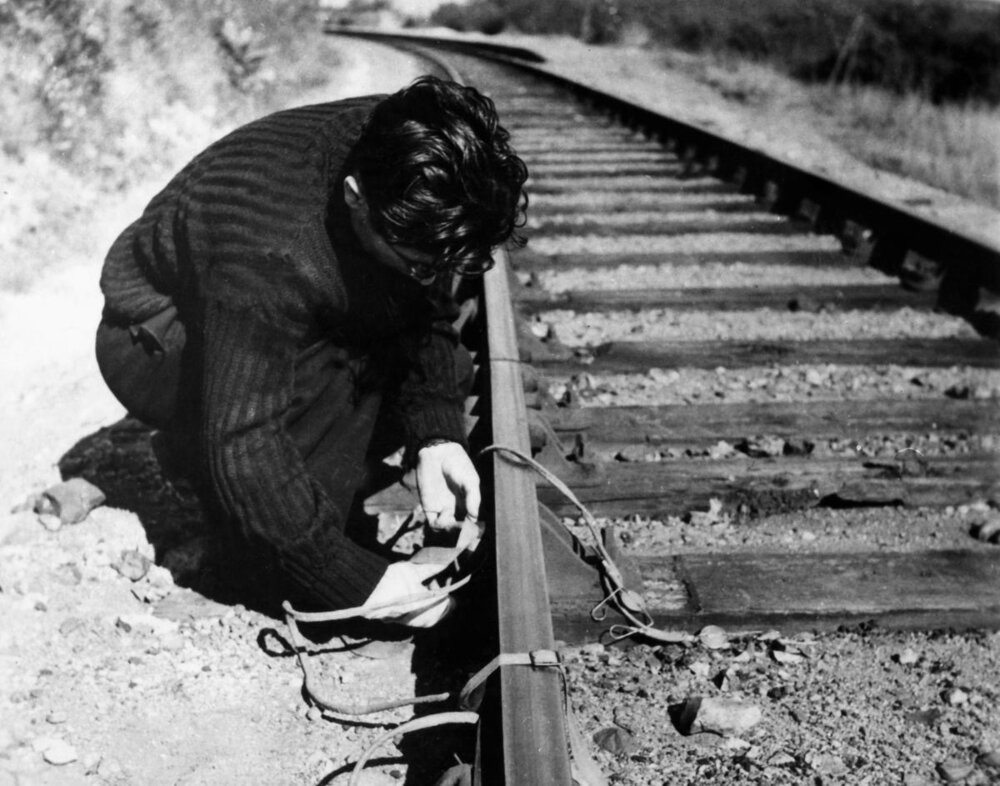by Norris Thomlinson / Deep Green Resistance Hawai’i Puget Sound Anarchists and It’s Going Down have reported on four recent incidents of simple sabotage against rail operations. Using copper wire to signal track blockage (as depicted in a video on how to block trains), actionists have executed cheap and low-risk attacks to temporarily halt:
- November 27: trains around Oakland, California
- November 30: trains near Medford, Oregon
- December 5: coal, oil, lumber, and chemical trains on the Columbia River
- December 9: coal trains in Nebraska
The Decisive Ecological Warfare strategy of Deep Green Resistance aims for cascading systems failure to shut down industrial destruction for good. Though these acts of sabotage are unlikely to cause more than minor inefficiencies in rail transport, they offer more return on investment than even the most successful aboveground actions.
For example, last year three DGR members halted a coal train for 12 hours before being arrested. Compared to other aboveground efforts, this was a very efficient operation, achieving a lengthy stoppage with a minimum of arrests. However, the total cost to carry out the action was high. Not only did the three activists spend significant time planning and executing the blockade itself, but a support team ensured rail employees and police couldn’t harm the activists without being documented (though this by no means guaranteed their safety.) Afterwards, the three arrestees faced multiple court dates consuming time and money, and causing stress. All charges were eventually dropped, but presumably the state would be less lenient for recidivism, raising the cost for repeated use of this tactic.
Contrast that to the statement by the Columbia River track saboteurs: “Trains were stopped for at least several hours and maybe more. Carrying out the action took less than an hour, about $40 materials, and little-no risk of being arrested.” (Presumably they also spent time beforehand to scout and plan.) Their use of underground tactics allowed them to hit and run, minimizing their risk, stress, and total investment in the action, and leaving them free to repeat the attacks at will. Not sticking around to be arrested is an enormous advantage, and our resistance movement must increase its use of guerrilla tactics to leverage our relatively meager resources.
DGR members don’t have the option of using underground tactics. By publicly opposing industrial civilization and calling for physically dismantling it, we’re obvious suspects for law enforcement to monitor and interrogate following underground attacks. Our role is to spread the analysis of the necessity and the feasibility of bringing it all down, and to support anyone who is able to carry out underground attacks.
We commend and thank those involved in these recent successful actions. We hope they’ll use the skills and confidence they’ve built in a low-risk environment to escalate their attacks to critical industrial infrastructure. And we hope none of them ever get caught, but if they do, we’ll be there to support them.
Analysis of Efficacy
On an Earth First! Journal page hosting the video on how to block trains, two commenters suggest this tactic isn’t effective at all:
“Lol if theres no reason a train should have a red signal, the dispatcher will have a crew sent out to find the problem, and in the mean time simply give trains authority past it. Try again.”
“Railroads have signal maintainers on duty 24/7/365 to troubleshoot issues like track circuits and keep trains moving on any given operating subdivision. I guess what you don’t understand is regardless of what you’re jumpering out there, trains can still move down the line.”
The posts are anonymous, and the authors express contempt for the actions of the saboteurs. Since they’re clearly not trying to give constructive feedback, it’s hard to know how seriously to take the critiques. If anyone has concrete knowledge of the impact of this tactic, please share. The better we understand the systems we want to disrupt and dismantle, the better our chance of success.
Read about more attacks on rail and other infrastructure at our Underground Action Calendar To repost this or other DGR original writings, please contact newsservice@deepgreenresistance.org
